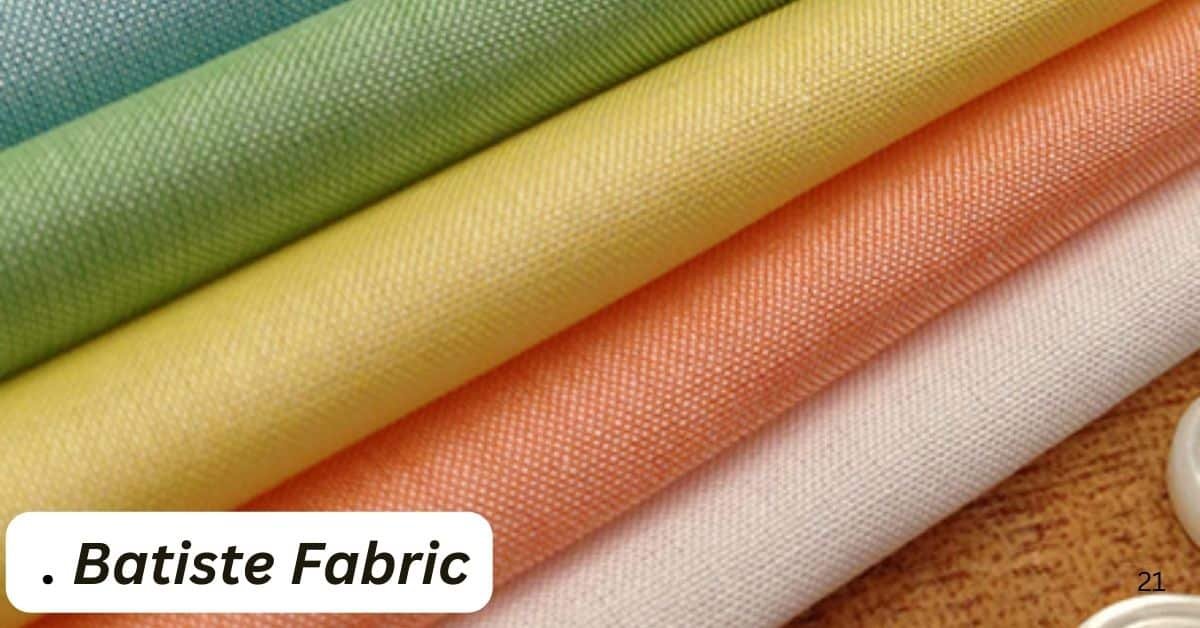Batiste is a light, airy fabric used in clothing and domestic textiles. Generously padded and textured, it’s elegant and cozy. Be it for summer garments, soft babywear or crafts, Batiste remains a favorite among fabric lovers around the world. But what is so extraordinary about this fabric? Let’s learn all about Batiste — its properties, uses, and production.
Table of contents
- What is Batiste Fabric?
- Historical Background:
- Properties of Batiste Fabric
- How Batiste is Made:
- Types of Batiste Fabric:
- Uses of Batiste Fabric:
- Caring for Batiste Fabric:
- Comparison: Batiste vs. Similar Fabrics
- Why Choose Batiste Fabric?
- What is Ripstop fabric?
- What Makes a Puffer Jacket an Essential Winter Staple?
- Conclusion
- FAQS
What is Batiste Fabric?
Batiste is a lightweight, plain weave fabric, often made from cotton, linen or even silk. It is unique in its lightness and comfort, which makes it ideal for summer wear and fine linens. Originally made of linen, Batiste was named after Jean-Baptiste Cambray, a 13th-century French weaver.
Historical Background:
Batiste originated in medieval France and Flanders, once reserved for elites due to its smooth texture and fine quality. Over time, machine weaving made it more accessible, showcasing its timeless appeal and textile evolution.
Properties of Batiste Fabric
Lightweight and Sheer
Batiste has an airy structure, which makes it light and delicate. This quality has made it a favored cloth in summer dresses, in construction of multilayer clothes and in light weight fabrics for home decoration. Although sheer, the fabric still offers enough structure to hold its shape and drape beautifully.
Softness and Smooth Texture
Batiste has a premium, silky-soft texture. The smooth surface of silk yarns makes it feel gentle on the skin, which is why manufacturers often use China silk to make baby clothes, lingerie, and other delicate garments.
Breathability and Moisture-Wicking
Batiste is pure and has one of the most premium soft silky texture. The smooth surface of silk yarns makes it feel soft on the skin, that is also why china silk fabrics are often used to make baby clothes, lingerie and other delicate garments.
Durability Despite Delicacy
Batiste looks fragile, but it is unexpectedly strong when made of quality fibers. Fine silk threads intricately and closely interwoven giving it durability yet still lightweight. Batiste will last through many washings and wearings with some care.
Natural Absorbency
Batiste has a very good absorptivity rate when made with cotton or linen. This makes it ideal for clothing and bedding that is used directly next to the skin, as this can absorb sweat but still remain comfortable.
Wrinkle-Prone
Batiste tends wrinkle quite a bit because of its fine weave and it is made from natural fibers. Its crinkly texture adds character but can be a pain to iron before wearing, because of that you’ll want to wear this in vintage and boho styles.
Transparency
Batiste is somewhat see-through and adds a level of sophistication to its all-around look. Because of these properties, it is perfect for layering pieces or sheer curtains and lighter weight home décor.
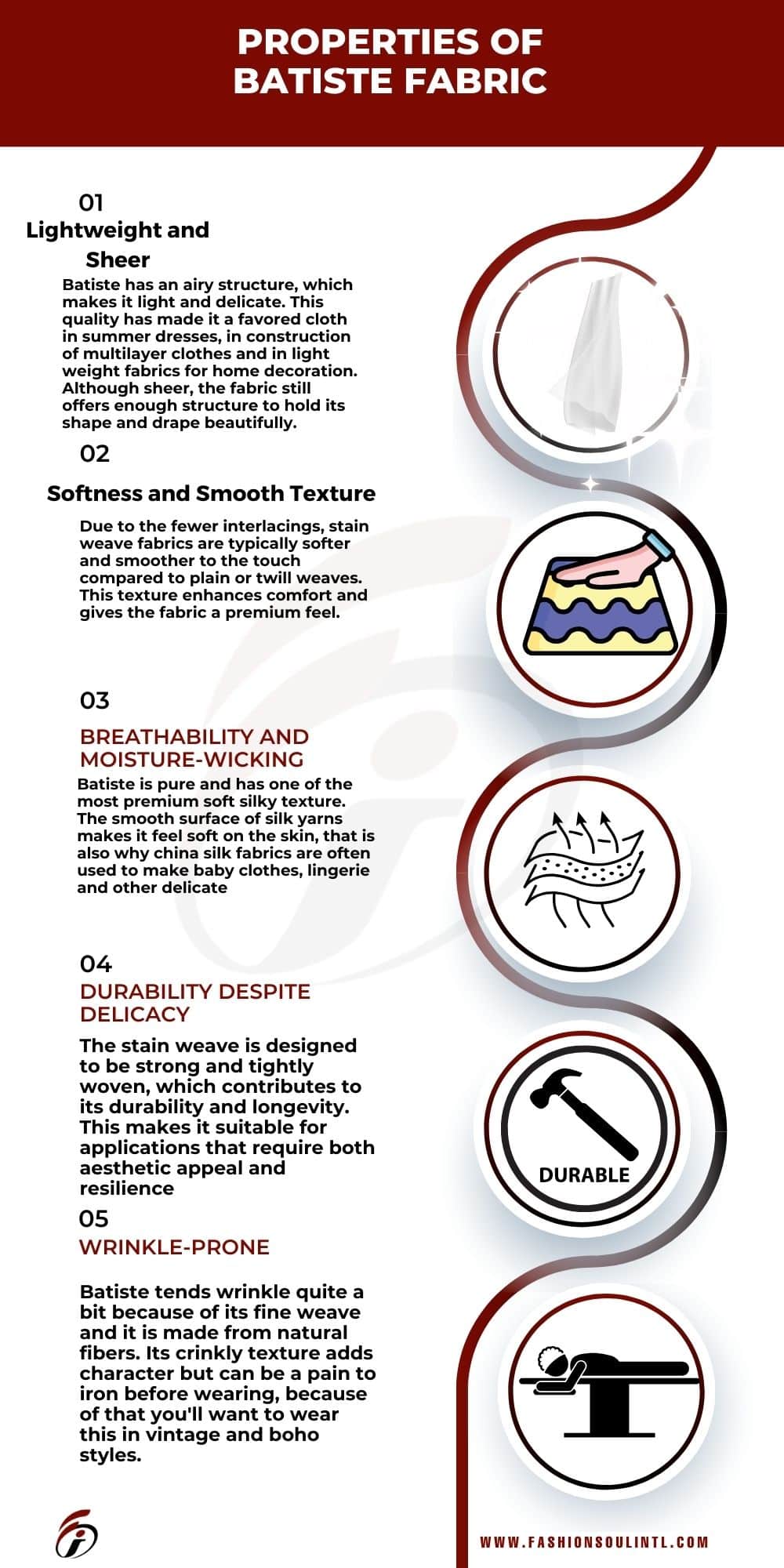
How Batiste is Made:
Manufacturers select fine fibers like cotton, linen, or silk to make Batiste, which they spin into smooth yarns and weave with a plain technique. After weaving, they treat the fabric with bleaching, softening, and calendaring to improve its texture. Finally, they inspect, roll, and prepare the finished Batiste for use in fashion or décor.
Raw Materials Used in Batiste Production
Batiste starts with carefully chosen fibers. Cotton gives it a soft, lightweight feel. Linen adds durability and crispness. Silk brings luxury and sheen, while synthetic fibers like polyester or nylon offer durability at a lower cost, though with less softness.
Spinning and Yarn Preparation
Once the raw material is harvested or obtained, it is spun into fine quality yarns. For the fabric to be smooth and consistent, the yarns are exquisitely spun. The step is essential for Batiste’s trademark breezy softness and lightness.
Weaving Process
The fabric Batiste is woven with a plain weave process, which means that the warp (the longitudinal threads in a piece of cloth) and weft (the crosswise threads) intersect evenly at right angles. This weave gives a fabric characterised as follows:
Airy: This even weaving keeps the thread soft and light.lose Weave: Although fine, Batiste has a tightly woven structure that you can rely on for durability and smoothness.
Finishing Treatments
Manufacturers treat the fabric with various finishing processes to enhance its softness, appearance, and functionality:-
Bleaching: They bleach the fabric, especially for white or pastel shades, to give it a bright and clean-facing look.
Mercerization: They condition some Batiste fabrics using a chemical process called mercerization, which adds gloss, improves strength, and increases dye absorption.
Calendaring: They pass the fabric between heated rollers to smooth and polish its surface, creating a slight sheen.
Softening: They apply additional treatments to ensure the fabric retains its natural softness and delicate drape.
Dyeing and Printing
Batiste can be dyed in nearly every color imaginable, but it is often found in un-dyed white or off-white colors. Sometimes the cloth would have some printed designs over it and sometime embroideries as well.
Finalization and Quality Control
Before Batiste is sold or used, it undergoes strict quality checks for softness, structure, and weave. After passing, it’s rolled, folded, and packaged for shipping. The intended use—fashion, home décor, or crafts—determines the choice of material.
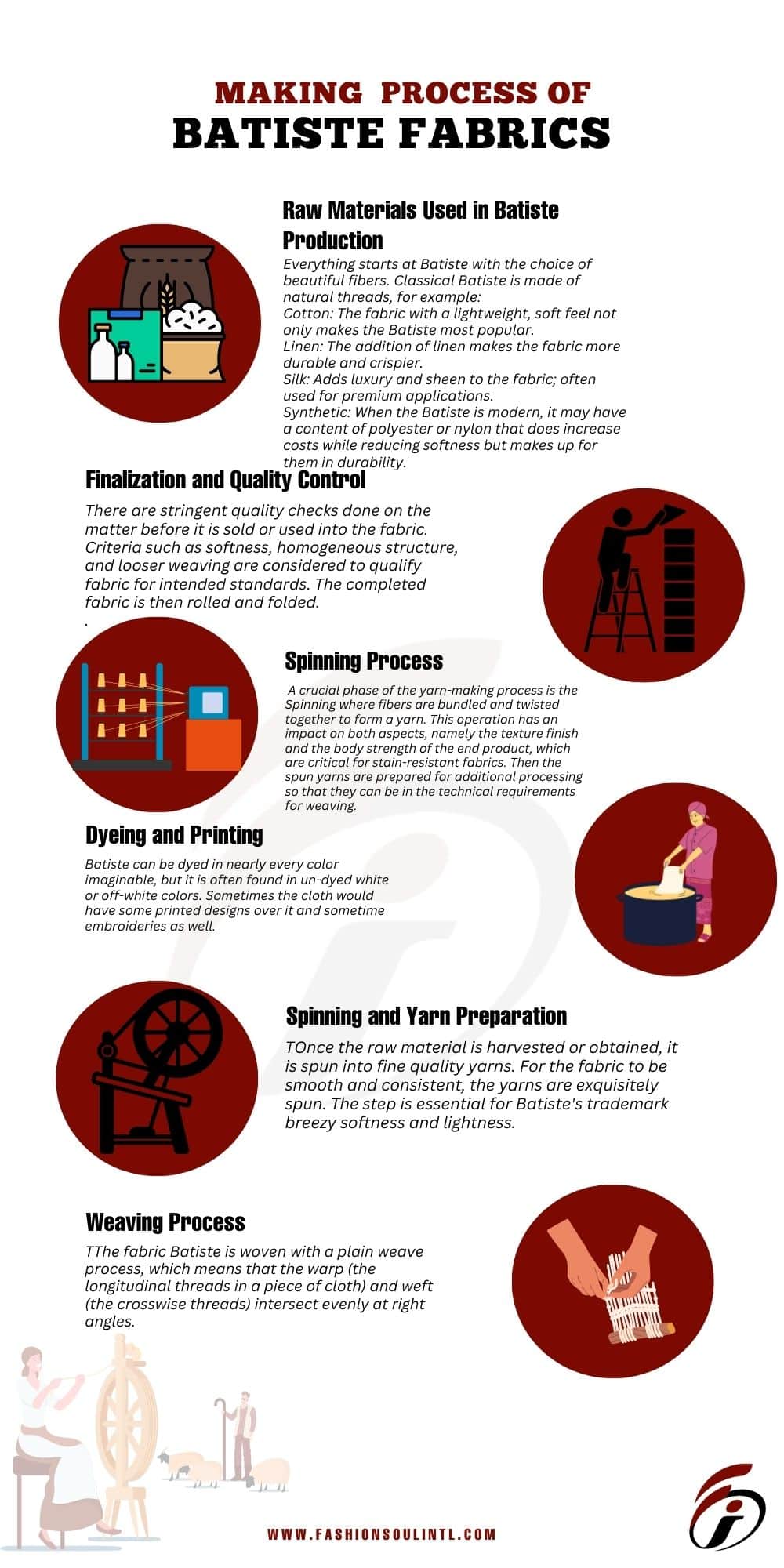
Types of Batiste Fabric:
Batiste fabric is a versatile fabric made from different fibers giving the resulting fabric unique properties. Depending upon source fiber and manufacturing process bend, Batiste could meet a variety of needs in the fashion, decor, and crafted realm. Here we list the different varieties of Batiste and how to identify them:
Cotton Batiste
Cotton Batiste is a smooth, breathable, and lightweight fabric made from 100% pure cotton. It’s hypoallergenic, dyes easily, and comes in various colors and prints. Perfect for summer wear, lightweight linings, and baby clothing.
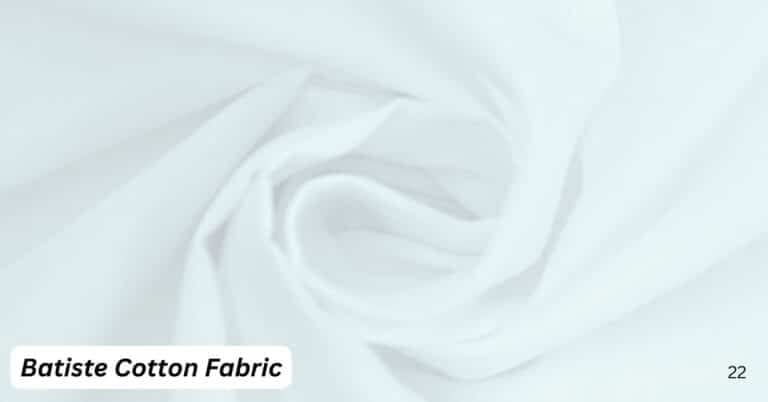
Linen Batiste:
Linen Batiste, made from flax, is thicker yet breathable and moisture-wicking. Its natural wrinkled texture adds charm. Perfect for heirloom sewing, vintage-style outfits, summer tunics, and crisp shirts.Read the more detail is linen batiste such as:
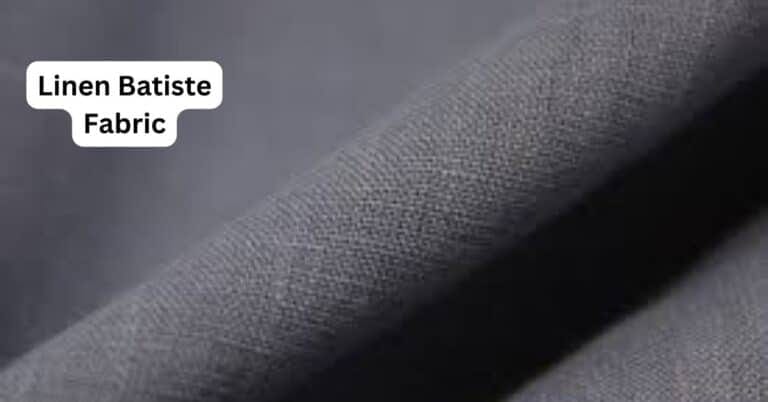
Silk Batiste:
Silk Batiste, made from pure silk, is soft, shiny, and perfect for elegant draping. Though delicate, it’s ideal for bridal wear, lingerie, luxury linings, and designer scarves.

Synthetic Batiste
Synthetic Batiste is made from fibers like polyester or nylon, offering durability and wrinkle resistance. It stays light and smooth, resists shrinking and fading, and is easy to maintain. Perfect for everyday clothes, strong uniforms, and budget-friendly crafts.
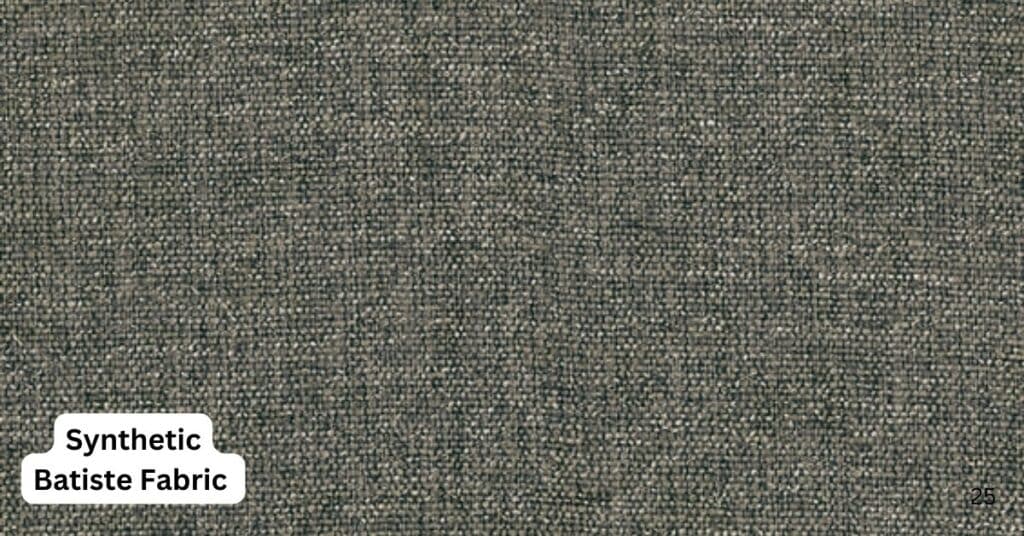
Blended Batiste
Blended Batiste combines cotton and polyester for comfort, durability, and wrinkle resistance. It’s easier to care for than natural Batiste and more affordable than silk or linen. Ideal for casual clothes, lightweight bedding, and decorative pillows.

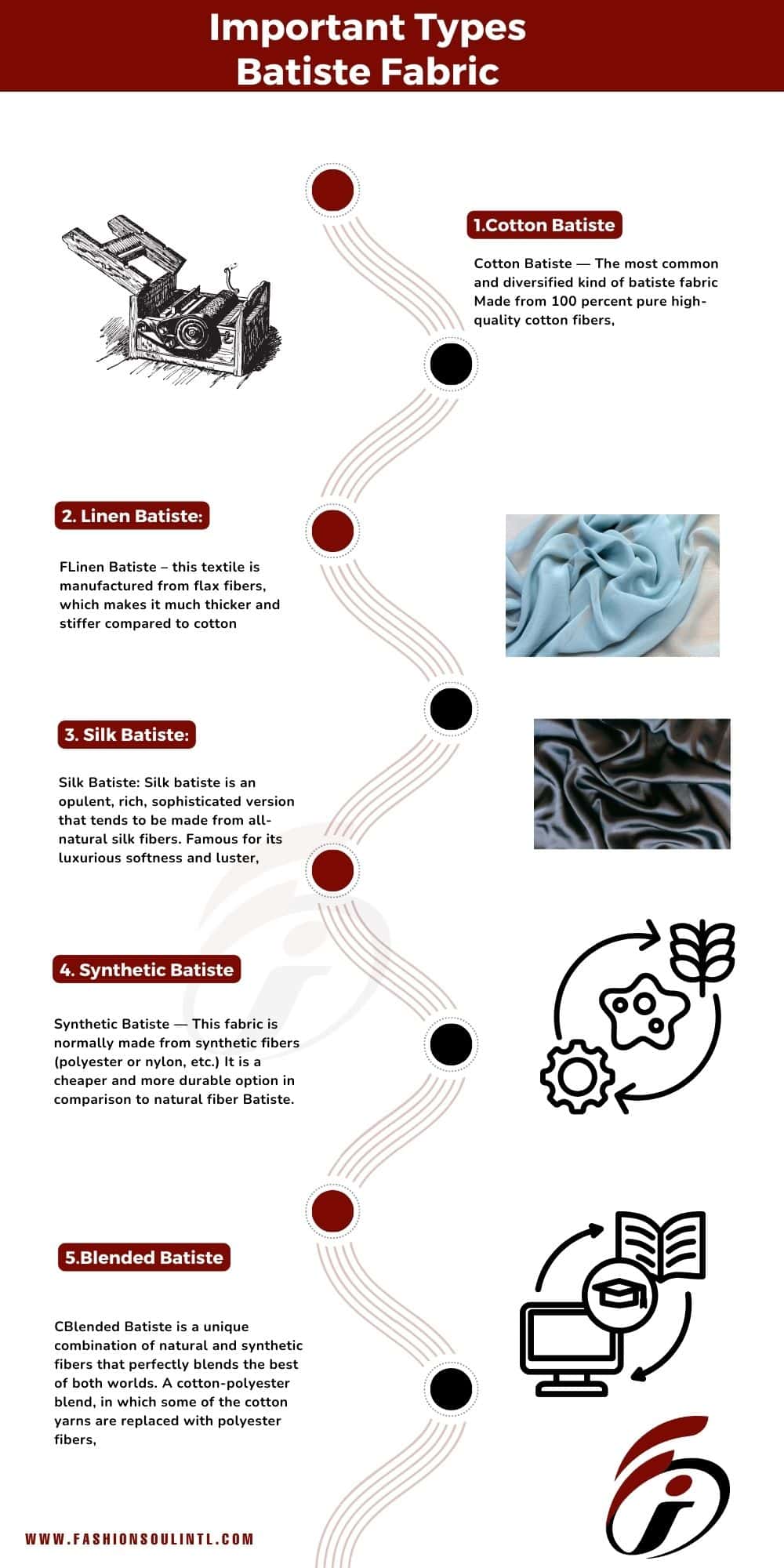
Uses of Batiste Fabric:
Batiste fabric is a lightweight, soft and breathable textile. Its versatility and lovely aesthetic makes it perfect for just about anything you can think of, be it fashion, home decor or crafting. So, what exactly do people use Batiste fabric for? Read on to find out.
Fashion and Apparel
Due to its light weight and airy feel, Batiste is a popular choice when it comes to clothing especially when the weather is warm or in cases where cloth needs airiness along with comfort level.
Dresses and Blouses
Batiste is one of our favorite summer suitable fabric for dresses, blouses and shirts as it provides a cool layer that falls beautifully without the bulk. Slight sheer adds sophistication, which is layered or lined for modesty.
Lingerie and Nightwear
Silk is a soft fabric that makes it ideal for more intimate pieces of wear such as slips, camisoles and lightweight nightgowns. Batiste also guarantees a comfortable and luxurious feeling on the skin.
Undergarments and Linings
Batiste is soft and smooth, making it ideal for linings in couture or formal wear without adding bulk. It adds elegance to bridal veils, gown overlays, and handkerchiefs, enhancing designs without overpowering them.
Baby Clothing and Accessories
Incredibly soft, Batiste is a favorite for baby clothing and accessories. Being hypoallergenic prevents any irritation to sensitive skin, which makes it great for new-borns.
Christening Gowns
Fine Batiste typically makes traditional christening gowns light and ethereal.
Baby Bibs and Bonnets
Batiste is very lightweight and breathable, so that makes it an amazing option for baby bibs, bonnets, or any other accessories to keep the babies cool and comfy.
Home Décor
Batiste adds elegance to home textiles due to its light weight and transparency.
Caring for Batiste Fabric:
Washing Instructions
Machine wash Batiste in cool to warm water using a mild detergent. For more fragile items, it is best to wash them by hand.
Ironing and Storing
Iron Batiste just a bit wet to remove creases, then keep it in a cool dry place to avoid dis-coloration.
Stain Removal Techniques
For stains, you should use mild detergent or special fabric cleaner whilst avoiding any strong chemicals which can ruin the weave quality.
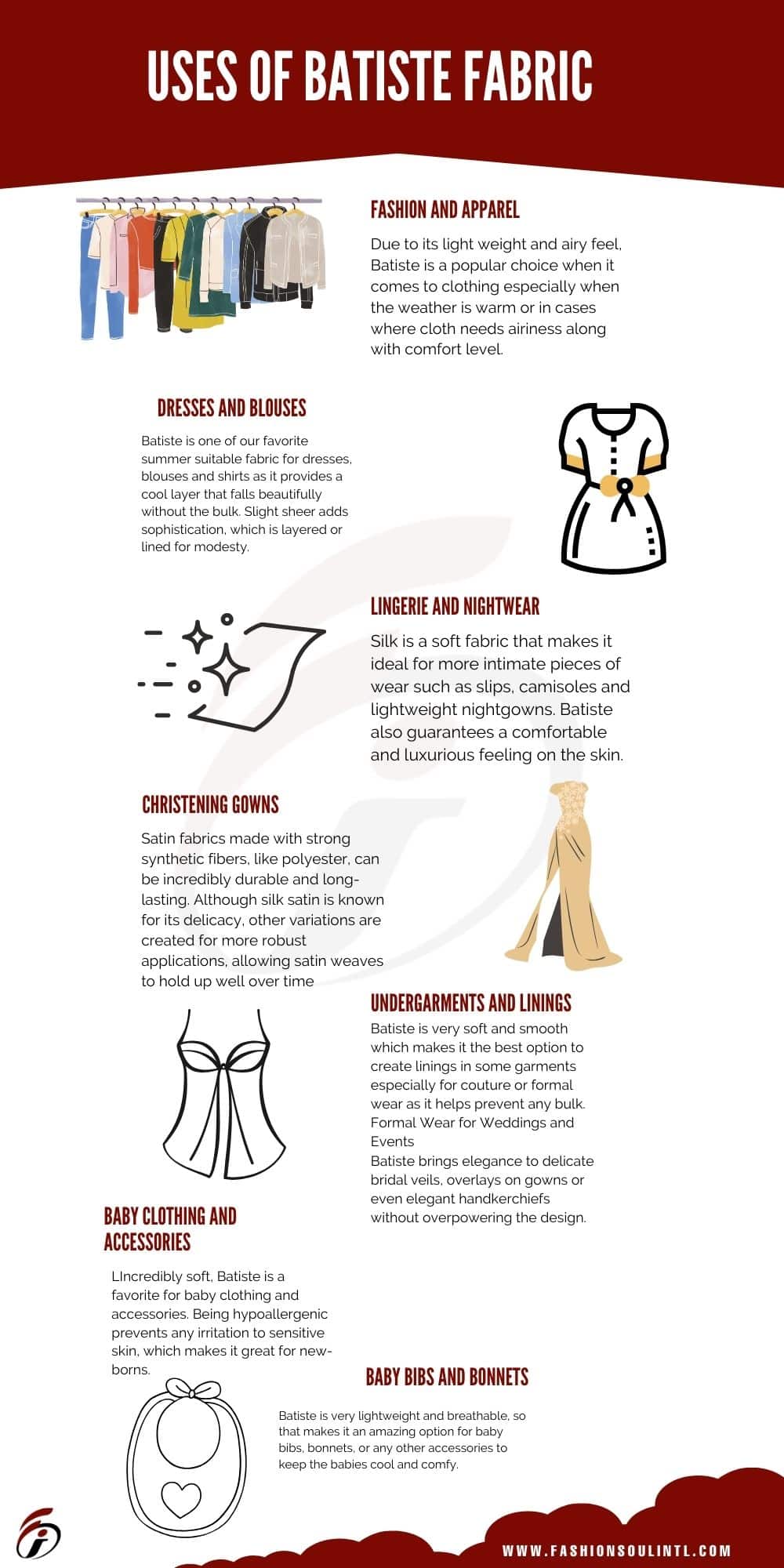
Comparison: Batiste vs. Similar Fabrics
Batiste is a two-way fabric which is more softer and opaque than Voile but finer than Lawn, allot unique for various applications.
Why Choose Batiste Fabric?
Batiste is a mistress of her own rite, whether it’s for consciously sound sceneries or all season comfort; no wonder discerning users are gravitating towards her utility and allure.
Current Trends in Batiste Fabric
Increased interest in sustainable fashion has caused designers to start integrating natural Batiste into their eco-friendly collections. Its versatility has also revived the UFC world into casual and activewear.
What is Ripstop fabric?
The Ripstop fabric uses a special weaving technique that adds thicker threads at regular intervals to a lighter-weight base fabric. This design creates a unique grid pattern that gives the fabric its tear-resistant strength. During World War II, manufacturers originally developed ripstop fabric to make durable military parachutes. Today, it has become widely used in many commercial applications due to its strength and versatility.
What Makes a Puffer Jacket an Essential Winter Staple?
When someone thinks of a puffer jacket, comfort, and warmth instantly comes to mind. Puffer jackets got a quilted jacket with insulation material sewn into it. Which aids in retaining heat while also preventing cold air from getting back in. They have been trending for years now because they are so light in weight yet so warm at the same time . Moreover, They don’t look bad anymore either, in the modern world, a puffer jacket serves more than just its functional use. It has assimilated many modern fashions and now has multiple uses, suitable for all purposes.
Conclusion
Batiste is a perfect example of tradition colliding with innovative textiles. With an illusion of fragility, it is strong and versatile enough to maintain its place as a firm favourite for fashion, home use and beyond. For creating heirlooms or just comfy style, Batiste has classic characteristics.
FAQS
Batiste is traditionally made from cotton, linen, or silk, but modern versions use polyester for durability and affordability. Cotton Batiste is soft and versatile, while silk Batiste offers luxury and excellent drape.
Batiste is light and airy, ideal for summer. In winter, it works as a lining or in layered outfits. Thicker options like Linen Batiste provide extra warmth.
Batiste is eco-friendly when made from organic cotton, linen, or natural fibers without harsh chemicals. Synthetic versions are less eco-friendly due to petroleum-based fibers.

